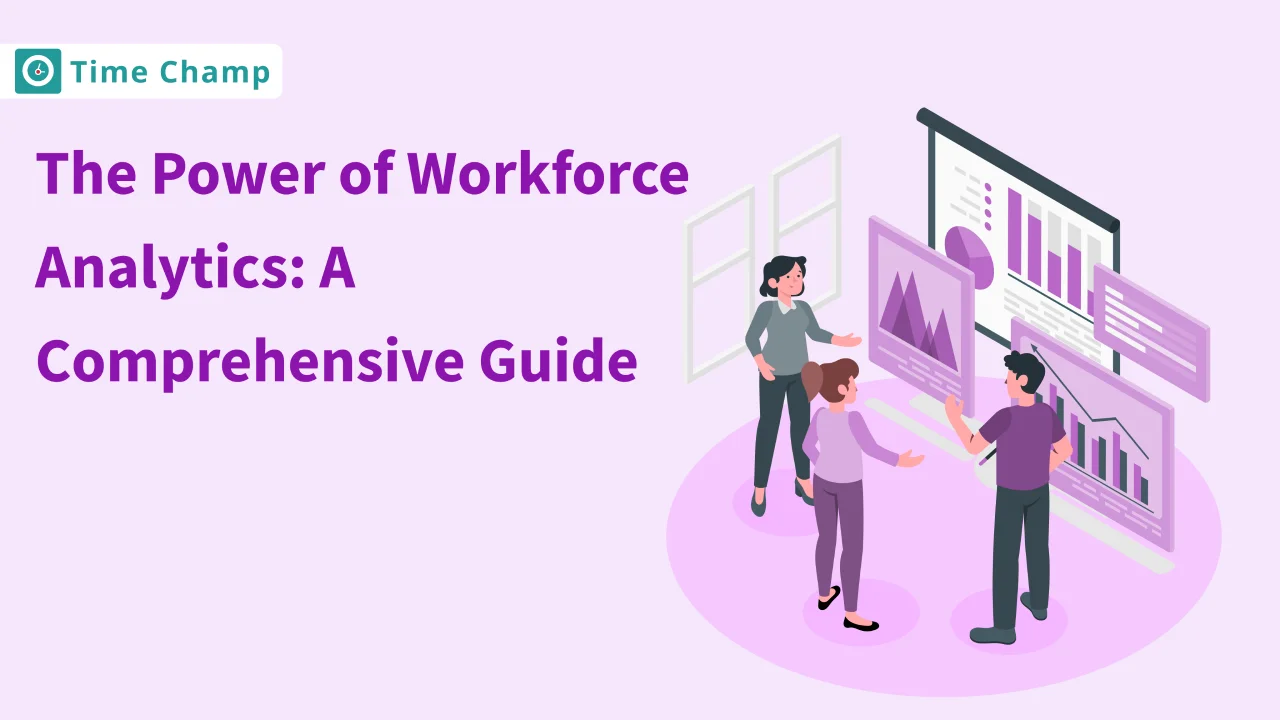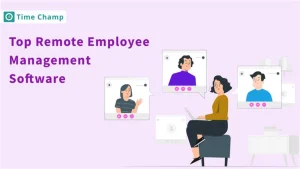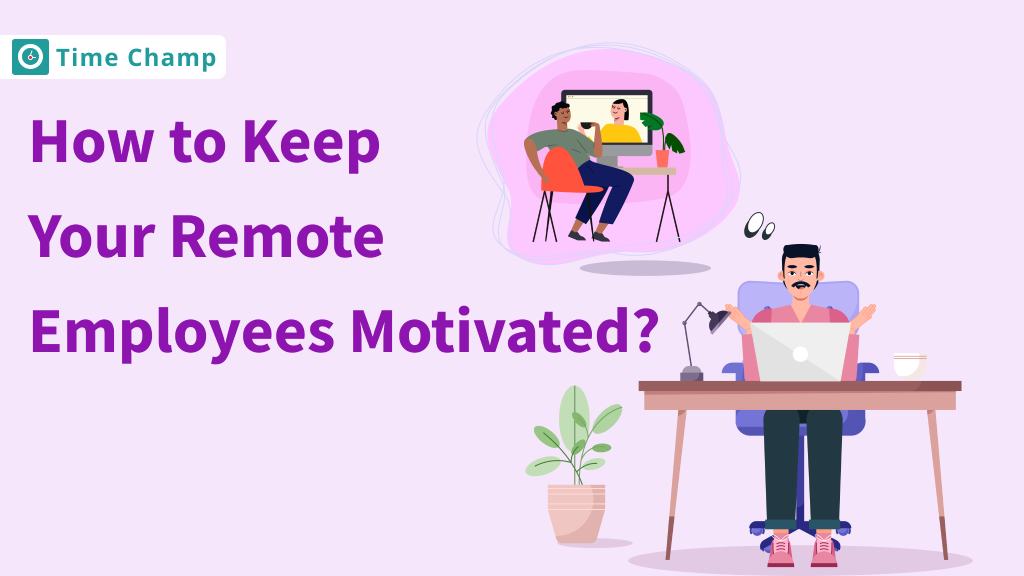As the markets change fast, businesses are waiting every day for ways to improve their overall effectiveness. A breakthrough has come with workforce analytics, which offers a window into how the workforce operates. Companies can use employee information to make decisions to promote success.
The blog also explains the meaning, examples, types, and benefits of workforce analytics–highlighting tools and software that help organizations prosper in a competitive environment.
What is Workforce Analytics?
Workforce analytics, or people or HR (human resources) analytics, means using data to make more effective decisions about employees. Understanding such issues as retention rate, efficiency in recruiting talent, and employee productivity all depend on this analysis. After the true nature of workforce analytics is understood, organizations will be ready to actively tackle problems in ways that improve their entire staff’s quality and level of job satisfaction.
What Does Workforce Analytics Mean? First and foremost, workforce analytics encompasses the systematic gathering, processing, and integration of data on workers. This helps give human resources professionals and management teams the ability to see trends, plan for tomorrow, and resolve problems today based on numbers. Workforce analytical reports cover everything from turnover rates to productivity levels and paint a 360-degree picture of the human side of things and what might happen in the next year.
Analytic Power Human resource departments are the most likely to accept workforce analytics. Human resources can use data to better design recruitment, build more effective training programs, develop employees over time, and ensure the capabilities of their workforce suit the strategic direction of the company.
Incredible Stories of Workforce Analysis at Its Finest
Let’s first take a look at some real-world examples of how companies in different industries have applied workforce analytics to their situations.
Tracking Employee Turnover A retail chain looks at workforce analytic reports to identify the retention rates of employees hired from different channels as well as their performance styles. Looking at this data, they discovered that employees recruited on the recommendation of staff were more likely to be retained and better performers. Consequently, they redesigned their recruitment policy to rely on employee recruitment from within–a system that decreased turnover and increased happiness inside the organization.
Improving performance management A software company used analytics to evaluate developer productivity. Thus, they could use KPIs such as project timelines and several bugs to direct their coaching to teams that required more attention. This not only improved product quality, but also made the development process more efficient.
Use of Workforce Analytics To boost retention rates, a healthcare provider conducted an analysis that led to the question of why their top nurses were leaving in such large numbers. From the data, it was clear that scheduling problems were serious. They reorganized their scheduling system, with a consequent large drop in voluntary turnover of better nurses.
Enhancing Training Programs An insurance company started using analytics to evaluate the efficacy of its training programs. By measuring employee performance before and after attending the training course, they were able to determine which courses were most effective, thereby enabling them to more effectively deploy existing human resources while also raising skill levels.
Understanding the Different Forms of Workforce Analytics
There are several kinds of workforce analytics. Relative to what has happened in the past, descriptive analytics can be used by businesses to see where their workforce fits into future trends. Prescriptive Analytics takes this even one step further, providing actionable strategies derived from the analysis.
- Descriptive Analytics: What is Analytics? Descriptive analytics entails gathering and analyzing past data to predict potential trends. In addition, it can serve as a story about an organization’s past performance and behavior. This helps HR to more clearly understand the effect of its policies and actions.
- Predictive Analytics: Predictive Analytics Looking further ahead, predictive analytics uses history to guess the future. They can also be used to determine employee turnover, predict high performers, and get a leg up on recruitment. Predictive modeling can also shed light on risks, such as the probability of burnout among employees or employee engagement.
- Prescriptive Analytics: Recommending Taking Action Precriptive analytics goes a step further by prescribing corrective counter-actions. Instead, it employs data and algorithmic models to offer suggestions that can assist the HR department in nipping problems in the bud. For example, if the data shows that a certain department will have a severe manpower crunch by some time in the future, then human resources can start making recruitments.
Workplace monitoring and work surveillance equipment
The Surveillance Software Wars Although monitoring one’s people is nothing new, workplace tracking and work surveillance software have become the darlings of efficiency managers. From tracking time and monitoring app usage to measuring their level of productivity, Time Champ and similar products give enterprises a detailed look at what employees are up to. Of course, companies should do their part in this respect by being transparent when doing surveillance as well as respecting people’s privacy and responsible treatment of data.
The Ethics of Surveillance In this era of big company mergers, surveillance is a tool to promote worker productivity and protect company assets. HR must make its employees aware of why they are being monitored and what it means for the entire company. Setting standards and getting agreements are the best ways to build confidence.
New Horizons Making use of workforce analysis tools.
Workforce analysis Technical breakthroughs mean there are more than just crude trackers available. Predictive, prescriptive analysis Now you can use artificial intelligence and machine learning to identify trends and outliers without human bias. With these technologies increasingly available to everyone, even small-scale organizations can begin putting them into use and reaping the benefits of smart workforce management. Tools such as Time Champ, which typically incorporate these sophisticated features, keep companies at the forefront of workforce management.
Strategic Workforce Analytics and Planning
Analytics for strategic planning Introducing a system where future manpower can be anticipated and strategically planned is the empress of organizational success. This type of planning relies heavily upon workforce analytics to understand labor trends, talent availability, and skill needs corresponding to long-term company goals.
Analytics and Scenario Planning Using forecast models, analysts enable HR teams to expect the expected (and unlikely) consequences of growth (or economic contraction) fluctuations. By taking the initiative for this, organizations reduce risks and are more able to quickly respond in terms of personnel needed.
Smarter Talent Development Workforce analytics enables companies to see where their current skills fall behind and to plan for the future needs of employees. Such strategic planning isn’t just for position filing but represents long-term talent cultivation that ensures ongoing organizational development.
Workforce Analytics Companies and Expertise
Leaders in Workforce Analytics As the significance of workforce analytics increases, there are plenty of companies offering solutions. They are firms that collect, analyze, and interpret workforce information. Some provide specialized software to clients, while others provide consulting services designed to help their customers maximize the returns they gain from investments in human capital.
Differentiation of Offerings The providers have different sets of services on offer, such as end-to-end workforce analytics, specialty consulting, and custom development of predictive models. Such services respond to the various needs of their clients and offer an unfair advantage through private sector knowledge and technological capabilities.
Workforce Analytics ‘Tangible Benefits
The Direct Benefits of Employing Analytics Implementing workforce analytics comes with a host of benefits that have a ripple effect throughout an organization:
-
Enhanced Hiring Processes: It can help firms hire higher-quality employees by targeting people with those qualities, as well as optimizing recruitment channels and time-to-fill metrics.
-
Reduced Turnover Rates: Analytics can also help companies reduce turnover by concentrating on identifying factors that cause people to leave.
-
Increased Productivity: Workforce productivity insights often suggest the streamlining of work procedures, elimination of wasteful practices, and increased output.
-
Better Financial Management: By matching workforce planning and budgetary needs, these provide for more refined estimates of labor costs as well as future financial requirements.
-
Competitive Edge: The data-driven approach enables nimble decision-making so that firms can respond rapidly to changes in the industry and take the upper hand.
-
Boosted Employee Engagement: Data can also tell us what makes employees tick, providing a measure of management initiatives tied in with productivity.
-
Enhanced Talent Retention: Employee turnover, on the other hand, can be predicted by utilizing predictive analytics to forecast which employees are most likely to abandon an organization.
-
Optimized Workforce Planning: Through the practice of anticipating demands, workforce analysis helps with preemptive resource management so that the right people with the right know-how are in the right place at just the right moment.
-
Cost Reduction: Workforce analytics can cut costs by revealing areas of inefficiency and resource redistribution.
Workforce Analytics – Means to Continuous Improvement By putting data at the core, organizations can set off a virtuous cycle of continuous improvement by continually honing their strategies in light of feedback from changing conditions and drawing on predictive analysis.
Workforce Analytics in HR: Transforming Human Resources
HR historically has been an administrative function, but workforce analytics changes that. Here are some ways HR benefits from analytics:
- Talent Acquisition Analytics: Using recruiting analytics, employers can reduce the likelihood of a bad hire.
- Performance Management: Through an examination of performance data, HR can design better and fairer evaluation mechanisms.
- Learning and Development: Training programs can be designed based on such data to truly train employees.
- Diversity and Inclusion: By establishing diversity quotas and analyzing how to improve, they can create a more inclusive workspace.
Making Use of Workforce Analytics PDFs and E-Guides
Educational resources To really understand workforce analytics, you basically can only rely on educational resources. PDFs and e-guides are the educational mainstays that enable HR professionals or other interested parties to understand what lies behind analytics.
The Prize of Workforce Building To truly make the most out of these materials, it is necessary to adopt a strategic perspective, identifying which areas are best suited for using workforce analytics. Preparing a toolbox of excellent reference materials, watching webinars, and spreading what you’ve learned around needless to say will multiply the value of these documents.
Selecting the Right Workforce Analytics Software and Platforms?
What Software Do You Need? There are countless analytical software packages on the market. How can you get past the confusion to make a choice? In-depth consideration of the features, usability, scalability potential, integration ability, and customer support are then required to whittle down a suitable choice.
Software that Fits the Organization’s Needs It is important to choose software that coordinates with your future strategic goals. Time Champ to Go Analytics platforms have flexibility built in so that different companies can adapt one to their own needs, measuring and analyzing the data it deems relevant.
Implementing and Integrating Analytics into the Workplace
The Roadmap to Successful Analytics Adoption
A Step-by-Step Guide to Workforce Analytics implementation of workforce analytics doesn’t simply entail the installation of software; it involves integrating it into the HR strategy. He reminds us that with a step-by-step guide covering initial assessment, stakeholder buy-in, user training, and an ongoing review process, it can be carried off in such a way as to maximize adoption levels.
Synchronization with Existing HR Practices for Cohesive Data
Effective integration also means ensuring that analytics tools work seamlessly with existing systems to provide coherent and comprehensive insights. Data accuracy and consistency are critical to achieving reliable findings that can truly inform decisions.
Time Champ: The All-In-One Workforce Analytics Solution
Time Champ is more than just employee monitoring software; it’s a comprehensive package of solutions designed to elevate the bar on workforce analytics. Whether you’re a small business owner, a team leader, or part of a larger corporation, Time Champ’s features give you extensive insights and control over the productivity and efficiency of your workers. Here’s how Time Champ is revolutionizing workforce management:
- Employee Monitoring: Duration Champ goes above and above to provide comprehensive staff monitoring solutions. It promotes openness and accountability while maintaining privacy and trust by providing a bird’s-eye perspective of staff actions.
- Activity monitoring: Time Champ’s activity monitoring enables you to view everything from a detailed analysis of daily tasks to more significant trends over time. Recognize how employees use their time and find both productive patterns and areas for growth.
- Productivity Tracking: Time Champ is about more than simply monitoring; it’s also about increasing productivity. It allows you to track individual and team productivity, ensuring that everyone stays on track to meet their objectives.
- Task Tracking: This tool keeps projects on track by allowing you to track task progress, establish deadlines, and ensure task completion on time. You’re always in the loop and can provide timely support if you keep track of task status.
- Project Management: Time Champ’s comprehensive project management capabilities allow you to easily manage various projects. Organize, prioritize, and track project workflows to ensure that everything runs smoothly from start to finish.
- Time Tracking: Time Champ’s detailed time tracking provides insights into how work hours are spent. This precise time data is useful for payroll processing, invoicing, and cost control.
- Time and Location Tracking: Champ’s comprehensive location tracking guarantees that employees are in the correct place at the right time, which is critical for distributed or remote teams. It’s a game-changer in terms of field safety and accountability.
- Live Screen Recordings: Time Champ provides instantaneous screenshots of your employees’ screens. It is an effective tool for studying daily routines and provides rich, instructional moments for increasing productivity.
Integrating Time Champ into your organization could be the key to realizing your team’s full potential. It’s the vision of your operations and the compass that directs your team’s daily path toward efficiency.
Discover the power of comprehensive workforce analytics with Time Champ. Don’t just imagine the impact it could have on your business—experience it. To take the first step towards empowered workforce management, schedule a demo with Time Champ today
Conclusion
A trip down the road of workforce analysis reveals a spectrum of prospects for personnel management to become an evidence-based profession. Through the analysis of workforce data, with analytic support for strategic goals and care in selecting implementation partners and tools, organizations can charge ahead into an increasingly efficient and creative future.
For those new to workforce analytics, it’s advisable to start small, gradually building competence and confidence in using data to guide HR decisions. Within time, these analytics will become integral to forming a winning workforce strategy.
FAQs on Workforce Analytics:
Small businesses can start with basic analytics tools that track key metrics related to recruitment, performance, and turnover, then gradually advance to more sophisticated systems as they grow.








